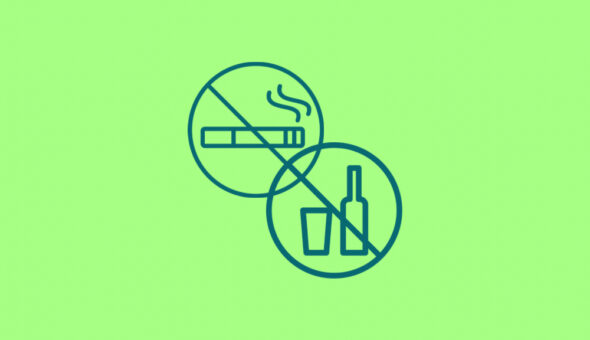One of the most effective ways of cutting smoking rates and saving lives is to discourage the purchase of tobacco by raising prices through taxation. To avoid losing customers, the tobacco industry uses a series of tactics to undermine these polices. In this piece, Dr Zaineb Sheik and Dr Rob Branston of the Tobacco Control Research Group explain the strategies companies use, and consider how these might be overcome.
Alcohol, tobacco, and goods high in sugar and salt are all implicated in the development of non-communicable diseases (NCDs) and premature death. Each year, 41m people die from NCDs, 17m of these prematurely. The vast majority of these premature deaths happen in low- and middle-income countries (LMICs). Globally, over 8m deaths each year can be attributed to tobacco use; 1.8m to excess sodium in the diet; and over 1.5m to alcohol use.
It is a widely accepted principle of economics that demand is sensitive to price. Pushing up the price of a product makes it less affordable, forcing customers to seek cheaper alternatives to their usual preferred brand, or to stop buying the product altogether. Price increases can therefore be a useful means of influencing consumer spending, and an important tool in public health policy if the objective is to discourage consumers from buying unhealthy commodities.
To reduce the potential harms of unhealthy products, governments can raise prices through taxation. In the UK currently, tobacco duty is 16.5% of the retail price plus £5.26 per pack of 20 cigarettes. For an average strength beer, the rate is 19.08 pence per litre. Higher prices, driven by increases taxation, are one reason why smoking rates have declined rapidly in England – by a rate of more than 1bn cigarettes a year, according to research published in 2019.
There is, however, another principle of economics that can’t be ignored – the need for companies to make a profit. When prices are pushed up by taxation, and the number of consumers subsequently falls, companies need to take action to protect profits and deliver for their shareholders.
This might mean adapting their products, fizzy drinks manufacturers being a case in point. In 2018, the UK government implemented the “sugar tax” – a levy on manufacturers and importers of soft drinks. A soft drink that contains 5-8g of sugar per 100ml is taxed at 18p per litre. But if the drink contains more than 8g of sugar per 100ml, it’s taxed at 24p per litre. The announcement of the impending charge (made in 2016) drove more than half of soft drinks manufacturers to reformulate their products in order to reduce the sugar content in their drinks, thereby avoiding the sugar levy (to some extent) when it came into effect. As a result, they could keep prices lower, keep their customers happy, while the public health benefitted from the resulting lower levels of sugar consumption.
Another approach is for a company to adapt its pricing, and this is what the tobacco industry does. Tobacco is massively profitable for its manufacturers so they have every incentive to try to keep on selling it. Despite claims of industry “transformation”, virtually all tobacco industry profits come from combustible tobacco products. British American Tobacco’s 2021 operating profits of £10.2bn were built on £22bn revenue from combustibles, and only £2.1bn of revenues from its new category products on which it admitted to making losses. Philip Morris International had a 2021 operating income of US$13bn – its revenue from combustibles was $22.2bn and from "reduced-risk" products, $9.1bn.
These companies rely on tobacco burning products for their profits and hence their survival. So when their profits on these products are threatened by higher taxes, they respond by using targeted pricing strategies to undermine the tax increase.
Researchers from the Tobacco Control Research Group and School of Management have identified six pricing strategies the tobacco industry uses in response to tax increases:
- Differential “shifting” of taxes between brands/products: Tobacco companies may “undershift,” where tax increases are not fully passed onto customers. Prices may rise, but not by the full amount in order to shelter price sensitive consumers. Alternatively, tobacco companies may “overshift,” where they increase the price beyond the tax increase, most often on premium products, so the company can earn even more profit from those less sensitive to price.
- Introducing new brands, variants, segments or products: Tobacco companies introduce cheaper brands or products so smokers can “down-trade” instead of reducing consumption or quitting.
- Price discrimination and price-related promotions: Tobacco companies target price-sensitive customers with coupons, bulk purchase discounts or free gifts, but charge the full price to other customers.
- Price smoothing: Tobacco companies gradually increase prices over time so the rise in cost isn’t as noticeable.
- Shrinkflation: Instead of charging customers more for a product, tobacco companies keep prices the same, but reduce the number of cigarettes or amount of loose tobacco per pack to disguise the price increase.
- Changing product attributes or production processes: In places where tobacco is taxed differently based on its characteristics (such as length, weight or product type), tobacco companies change the product or how it’s made so it falls in a lower tax category.
The tobacco companies use different strategies according to their target market. Undershifting tends to be more frequently used in more price-sensitive LMICs, whereas overshifting is more common in high income countries. In addition to their pricing strategies, the industry takes advantage of different legislative loopholes in different countries, adapting product supply accordingly.
The result is that the public health benefits that would come from increased taxes – effectively pricing people out of the market so they’re less likely to start smoking and more likely to cut down or quit altogether – are undermined.
Dr Rob Branston talks to STOP about the policy implications of industry pricing tactics:
There are numerous policy measures that could be introduced to counter these tactics, for example limiting the number of times prices can be changed, banning promotional discounts, specifying tobacco pack size, and freezing the market so no new brands can be launched. Ultimately, the strongest response would be to directly set tobacco prices so that these pricing strategies can’t be used as a weapon against public health measures.



